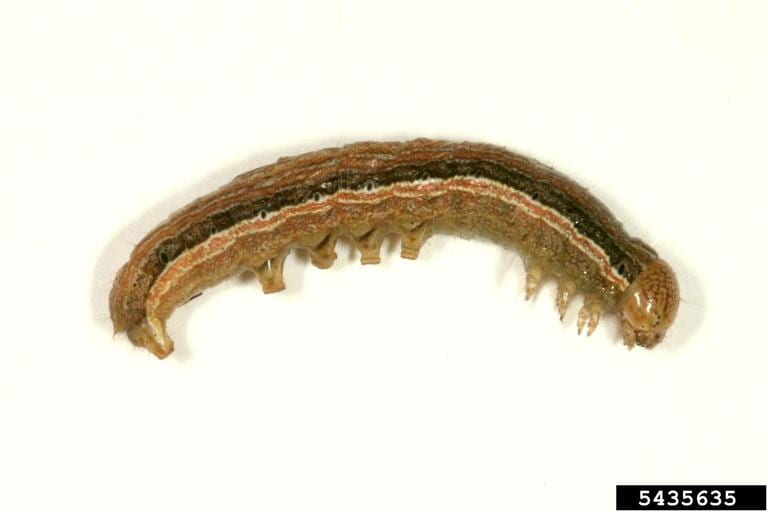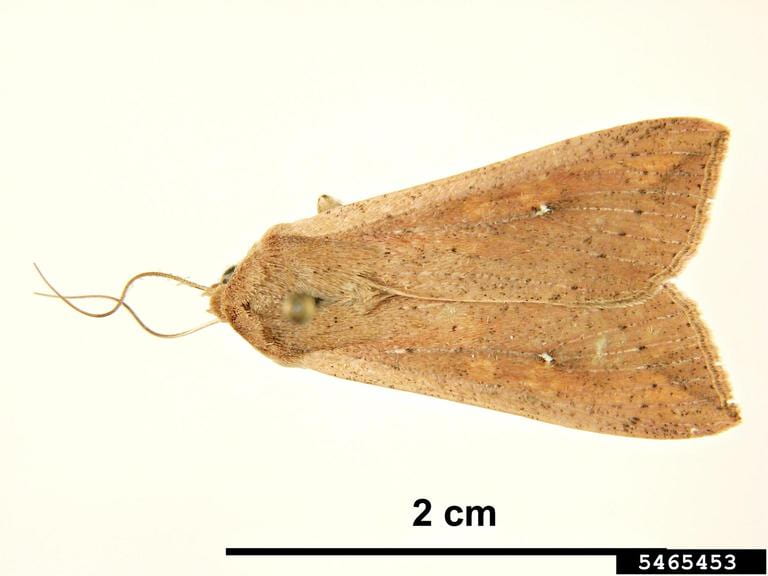Transplant production continues for late-planted crops. The three panels below include observations on seedling root and shoot growth and a bottom-watering irrigation system.
Month: May 2020
Early Season Cucurbit Pests– Jim Jasinski, Dept. of Extension, Celeste Welty, Dept. of Entomology
Although it’s been wet over most of the state recently, the temperatures are warming up allowing growers to get into their fields to direct seed or transplant pumpkin, squash, melon and cucumbers through May and into June. By now most decisions about how to manage key early season pests may have already been made with the purchase of systemic seed treatment or plans to treat transplant water using neonicotinoid insecticides. Some growers may have decided to forego systemic treatments and rely on scouting and treatment using foliar insecticides when thresholds are exceeded.
Systemic Insecticide Use Considerations
Seed treatments containing thiamethoxam (FarMore FI400, Cruiser) offer maximum protection against cucumber beetles and other pests for about 2 to 3 weeks after seedling emergence. Seed treatments offer little protection to transplanted crops. For transplants and direct-seeded plants over 3 weeks old, the concentration of insecticide from seed treatment is no longer strong enough to kill beetles but can still harm bees due to sublethal doses in the pollen and nectar. Treated seed should never be used in combination with at-plant soil drenches with flupyradifurone (Sivanto), imidacloprid (Admire or generics), or thiamethoxam (Platinum). At-plant soil drenches used alone, with non-treated seed, offer similar protection to treated seed for beetle control. Due to increased residues in nectar and pollen, in-furrow applications should be considered last and applied at the lowest recommended rate that provides control. Non-systemic foliar applications of insecticides can be used to control cucumber beetles if seed or in-furrow treatments were not used, or were ineffective. Once flowers are present, applications should be made in the evening when flowers are closed and bees are not actively foraging, which minimizes the risk to pollinators.
Thresholds range from 0.5 to 1 beetle per seedling, and 1 to 5 beetles per plant for plants after 4 leaf stage. The threshold for cantaloupe melons and cucumber is lower because these crops are susceptible to bacterial wilt, which is vectored by cucumber beetles. Pumpkin, squash, and watermelon have higher thresholds because these crops are less susceptible to bacterial wilt, but beetle feeding can occur on the fruit rind by both adult and larvae, causing marketable loss. Beetles found in pumpkin or squash flowers do not pose a risk to the plant but as flowering decreases, rind feeding may increase.
Key Pest #1 – Striped cucumber beetle. This small black and yellow striped beetle is a major pest of all cucurbits early season. In addition to the heavy feeding damage that can be inflicted upon seedlings, this feeding injury can also transmit bacterial wilt to the plant which will stunt or kill the plant. Growers can control this pest in several ways such as buying Farmore FI400 treated seed, which contains several fungicides paired with thiamethoxam that provides seedling protection for 2-3 weeks after emergence. Using an in-furrow treatment of a systemic insecticide at planting will provide a longer window of control, between 4-6 weeks. Another management option is to scout for beetles on emerged seedlings, and based on seedling stage, use a foliar spray when the threshold is exceeded according to the guide below:
0.5 beetle per plant for cotyledon through 1st leaf
1 beetle per plant for 2nd and 3rd leaf
3-5 beetles per plant for anything after the 4th leaf stage
Regardless of method of treatment, be sure to scout for these beetles and damage on the underside of the cotyledons and early leaves every few days, because severe damage can occur rapidly in a short period of time. Pollinators can also be affected by systemic insecticides present in pollen and nectar, so seed treatments to some degree but more so in-furrow products should be considered for risk before use. Foliar applications of insecticides should be made in the evening to minimize pollinator impact.
Key Pest #2 – Squash Vine Borer (SVB). The damaging stage of this pest is a caterpillar that emerges from an egg laid by a moth that mimics a wasp. SVB adults becomes active in early June and the best management practice for this pest is to put up a pheromone trap next to the cucurbit field and monitor the number of moths caught. A week after adult moths are caught in the trap, usually around mid to late June, apply an insecticide targeted at the base of the plants where the eggs are laid for up to four weeks. If the caterpillar bores into the stem of the plant, treatment will not be effective. Systemic products such as imidacloprid, used either as a seed treatment or in-furrow application at planting, will not control this pest.
Key Pest #3 – Squash Bugs. These true bugs overwinter as adults in nearby fields and can attack seedling and smaller plants with sucking mouth parts that can collapse leaves and stems. These pests can also vector yellow vine decline (YVD), caused by a bacterial pathogen that can cause stunting and death in young plants. Plants infected with YVD will turn yellow about one month after being infected, and there is no remedy for infected plants. If more than one egg mass per plant is found, treatment is warranted once the nymphs hatch. If nymphs mature to adults, they are harder to control. Plantings treated with imidacloprid drench in furrow usually are well protected from squash bug.
Key Pest #4 – Seedcorn Maggot. The seedcorn maggot feeds on organic matter in the soil, including seeds before or after sprouting. This pest can be a problem in early plantings when germination is slow, as occurs in cool, wet springs, especially if fields are planted soon after a large amount of organic matter has been incorporated into the soil. The adult flies of seedcorn maggot emerge in April or May and search for soils high in organic matter to lay eggs; recently worked soil seems to be favored for egg laying. Injury can be avoided by planting under conditions that promote rapid seed germination and growth. Do not plant for 3 weeks after incorporating organic matter, including cover crops and weeds. Use seed that has been treated with systemic insecticide or use in-furrow drench treatments.
Key Pest #5 – Black Cutworm. This is a sporadic pest across Ohio typically associated with no-till fields or weedy fields containing winter annuals such as chickweed. The weeds attract black cutworm moths as a host to lay their eggs. Once herbicides are applied to control the weeds, the cutworm caterpillars move in search of other plants to feed on. Each caterpillar can cut several seedlings in a row before pupating in the soil. If limp or flagging plants are seen in the field, lightly dig in the area around the wilted plant, especially in the soil cracks nearby to find this pest.
A list of recommended insecticides for all these pests can be found in the 2020 Midwest Vegetable Production Guide (https://mwveguide.org ).
Beware of armyworm on early sweet corn and other crops!
We have detected an extremely large population of armyworm moths in Columbus during the past week. This pest prefers to feed on grasses, including corn, wheat, rye, and grassy weeds, but if those plants are in shortage and if populations of armyworm are large, it can infest other crops including alfalfa, beans, cabbage, cucumbers, lettuces, onions, peppers, and radishes. Infestation can be worse in no-till fields than in tilled fields. Any early-planted fields of these crops should be scouted for presence of armyworm. Scouting is best done near dawn or dusk because armyworm larvae are nocturnal and hide in the soil during the day. The name armyworm is given because of the ability of older larvae to form large aggregations that move together from field to field. Infestations can appear quite suddenly in a field, and much damage can occur in a short period of time.
The proper common name of this pest is just ‘armyworm’ but it is often called the true armyworm or the common armyworm, to differentiate it from other species such as fall armyworm, beet armyworm, and yellow-striped armyworm. Its scientific name is Mythimna unipuncta, formerly Pseudaletia unipuncta. It is a member of Order Lepidoptera, Family Noctuidae.
Armyworm larvae are striped, as shown below in Figures 1 and 2. The body is greyish-green or greyish brown with broad dark stripes down its back and along each side, and with a light stripe below the dark stripe on each side. The head is yellow or yellow-brown, marked with net-like brown lines. The body is about 35 mm (1.4 inches) long when fully grown. The larval period lasts about 3 weeks. There are about 2 or 3 generations per year in Ohio. The adult is light brown with a white dot near the center of each forewing, as shown below in Figure 3.
The adult is a moth that can be detected in blacklight traps and pheromone traps. We have had a blacklight trap operating in Columbus since the first week of April. We detected quite a few armyworm moths (0-32 moths per night) throughout April, but there was a large surge on 5/14 when there were 210 armyworm moths in the trap after a single night. Dr Dave Shetlar has been tracking various species of moths in blacklight traps at several locations for several decades, and he thinks that 210 armyworm moths in one night is a new record high number.
The link to our pheromone trap reports is here: https://docs.google.com/spreadsheets/d/10gh3rHahdxLKkXQapGyEPxWsjHYRmgsezOoFHnwtyEo/edit#gid=1122468773
The link to our blacklight trap reports is here: https://docs.google.com/spreadsheets/d/10gh3rHahdxLKkXQapGyEPxWsjHYRmgsezOoFHnwtyEo/edit#gid=1114468121
Sweet corn and field corn that is transgenic due to presence of B.t. should have protection from armyworm feeding. Seed treatments on corn by clothianidin, thiamethoxam, or imidacloprid can offer some suppression from caterpillars such as armyworm, but they are primarily for control of beetles. For sweet corn that is not transgenic, insecticide treatment is suggested if more than 35% of plants show infestation by armyworm during the seedling or early-whorl stages. Insecticides that can be used for armyworm control on sweet corn are pyrethroids (Asana, Baythroid, Brigade, Mustang, Permethrin, Proaxis, Warrior), or Blackhawk, Coragen, Intrepid, Lannate, Lorsban, Radiant, or B.t. products such as Dipel and Javelin.
-by Celeste Welty, Extension Entomologist, 16 May 2020
Lunch with Great Lakes Vegetable Producer’s Network
If your schedule permits consider listening in on the Great Lakes Vegetable Producer’s Network, an offshoot of the Great Lakes Vegetable Working Group, designed to help you with your production and pest management questions.
A live weekly roundtable discussion during the growing-season for commercial vegetable producers in the Great Lakes and Midwest region. Join us! We broadcast live via Zoom at 12:30 ET/11:30 CT every Wednesday from the first week of May to the first week of September.
To be a part of the live audience, join here -> bit.ly/glvegnetwork. If you have a pressing vegetable production issue that you would like discussed, simply email it, along with your phone number, to greatlakesvegwg@gmail.com.
First Episode Airs Today, May 6th
In the first episode, on May 6, we will interview Amanda Byler, a Family Nurse Practitioner who works with migrant worker communities Great Lakes Bay Health Centers, and Annalisa Hultberg, University of Minnesota Extension Educator for on-farm food safety, about farm family, farm worker, and customer safety as we enter our production season during a global pandemic.




















